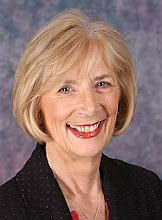Secret formula for love and marriage revealed
Submitted by goodnews on martedì, 16 febbraio 2010
The maths formula that predicts your Optimal Proposal Age. If your boyfriend hasn’t got round to proposing and seems more interested in his calculator, don’t despair. He might just be working out his Optimal Proposal Age before popping the question. Boffins in Australia have come up with a quirky equation they say will predict the best age to get engaged with the promise of a long and happy marriage. For most people, it seems, that’s 27. The ‘Fiancée Formula’ works on the basis of how old a man is when he starts looking for a life partner – combined with the oldest he’s prepared to be when he ties the knot. Using romance by numbers, he can calculate the optimum age to propose. ‘Applying maths to matters of the heart is always a dangerous prospect,’ said Professor Tony Dooley from the University of New South Wales School of Mathematics and Statistics. ‘But if you want to work out the right moment to start getting serious, then this actually gives you a mathematical framework to think about it. ‘The result is your Optimal Proposal Age. ‘Ideally you should not propose to anyone before you hit this age, but afterwards you should prepare to pop the question to the very next girl you date – as long as she’s the best of the bunch so far!’ The formula is based on a similar equation used in the finance and medical sectors to pinpoint when to take action to maximise rewards and minimise costs. And if you think a mathematical equation takes all the romance out of Valentine’ sDay, you may be right. The researchers claim a 37 per cent success rate, which doesn’t sound very impressive. But they say traditional ways of picking a bride don’t guarantee a successful marriage, either. ‘Although probability isn’t the most romantic basis for a marriage, the formula does seem to fit a lot of couples, whether through accident or design,’ Prof Dooley said.’One could argue that the current, less structured approach to picking a marriage partner hasn’t been 100 per cent successful, so perhaps it’s time for men to consider following a stricter set of rules when it comes to marriage planning.’First the mathematicians worked out a fiendishly complex equation:
∑ (n-k) (n-k-1) (n-k-2) … (n-k-r+2) x k x (1)
n (n-1) (n-2) (n-r+2) (n-r+1) (r-1)
The answer they came up with was 0.368 and thankfully that can be fed into a much simpler ready reckoner – set out in our step-by-step guide – that men can use to work out the right age for them. So, ladies, get your boyfriend number crunching, and hope he comes up with the right answer on February 14th. Maybe, as the researchers say, ‘Any advice is good advice when itcomes to courtship calculations.’ STEP-BY-STEP GUIDE: Choose the oldest age by which you want to get married, for example 39. Call this number ‘n.’ Decide the earliest age at which you’ll start to consider women as potential wives, for example, from 20 onwards. This number becomes ‘p’. Subtract ‘p’ from ‘n’ (20 from 39) then multiply the result by 0.368. This gives you 6.992, which you should add to your minimum age (20). The result of 27 (more or less) is your Optimal Proposal Age. news from dailymail.co.uk - Marriage is a social union or legal contract between individuals that creates kinship. It is an institution in which interpersonal relationships, usually intimate and sexual, are acknowledged in a variety of ways, depending on the culture or subculture in which it is found. Such a union may also be called matrimony, while the ceremony that marks its beginning is usually called a wedding. People marry for many reasons, most often including one or more of the following: legal, social, emotional, economical, spiritual, and religious. These might include arranged marriages, family obligations, the legal establishment of a nuclear family unit, the legal protection of children and public declaration of love.Selection of a partner. The selection of a marriage partner may involve either the couple going through a selection process of courtship or the marriage may be arranged by the couple’s parents or an outside party, a matchmaker.
A pragmatic (or ‘arranged’) marriage is made easier by formal procedures of family or group politics. A responsible authority sets up or encourages the marriage; they may, indeed, engage a professional matchmaker to find a suitable spouse for an unmarried person. The authority figure could be parents, family, a religious official, or a group consensus. In some cases, the authority figure may choose a match for purposes other than marital harmony. In rural Indian villages, child marriage is also practiced, with parents at times arranging the wedding, sometimes even before the child is born. This practice is now illegal under the Child Marriage Restraint Act. In some societies ranging from Central Asia to the Caucasus to Africa, the custom of bride kidnapping still exists, in which a woman is captured by a man and his friends. Sometimes this covers an elopement, but sometimes it depends on sexual violence. In previous times, raptio was a larger-scale version of this, with groups of women captured by groups of men, sometimes in war; the most famous example is The Rape of the Sabine Women, which provided the first citizens of Rome with their wives.Other marriage partners are more or less imposed on an individual. For example, widow inheritance provides a widow with another man from her late husband’s brothers.
Say Happy Father’s Day With Personalized Cards & Gifts
-
To celebrate Father's Day, give your dad, grandpa, or another father figure
in your life personalized Father's Day gifts and a Father's Day card
they're ...
3 years ago

















No comments:
Post a Comment